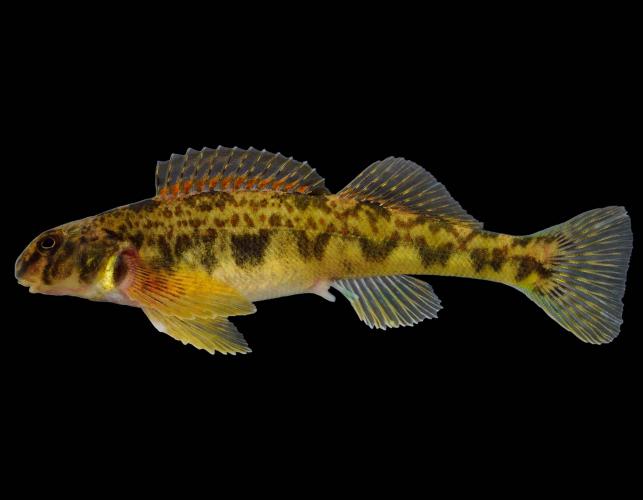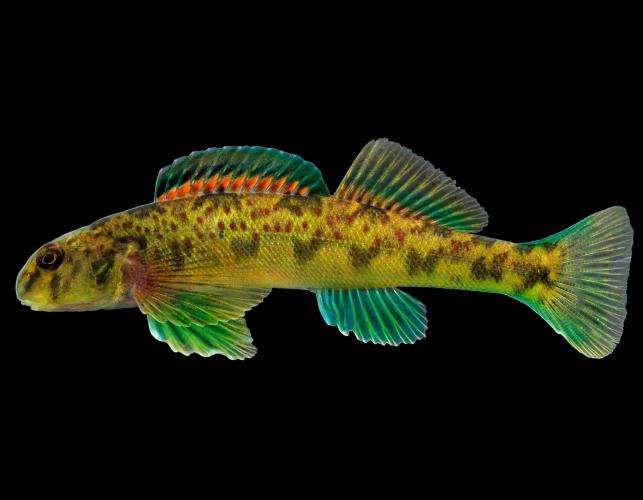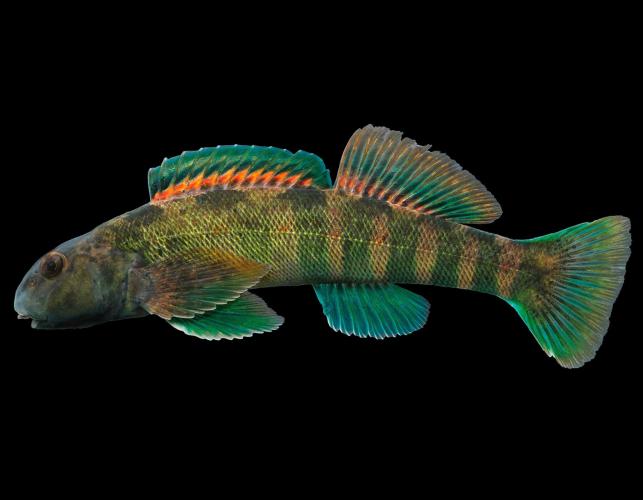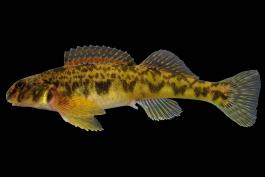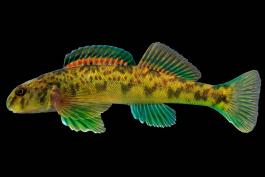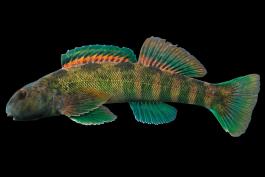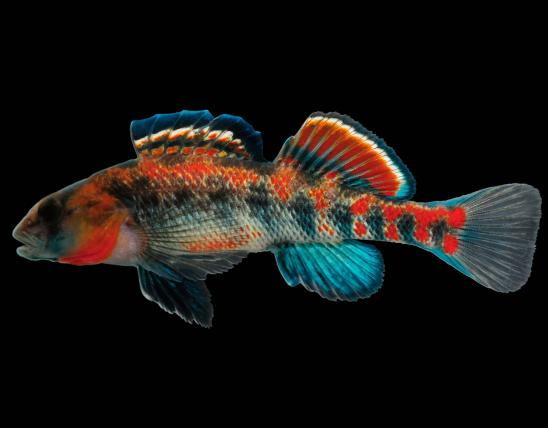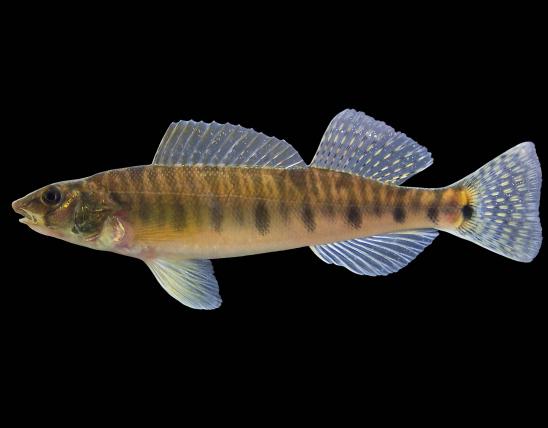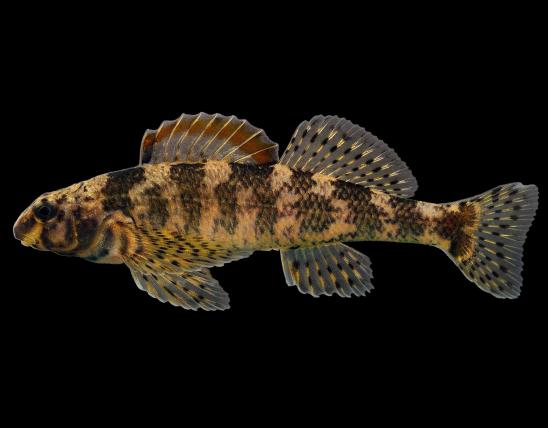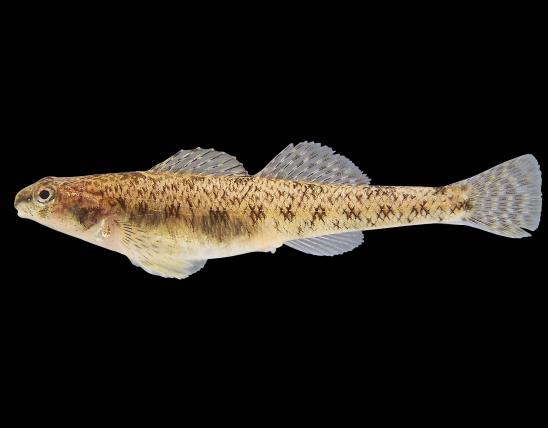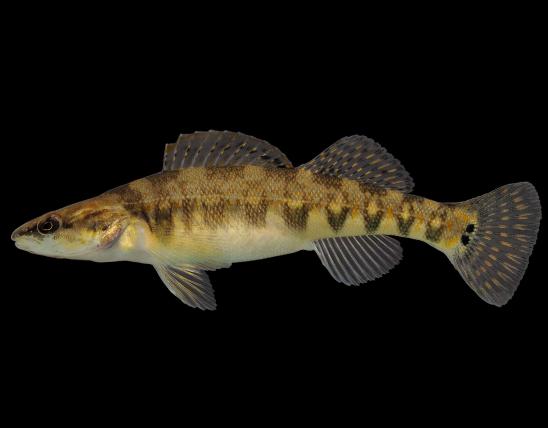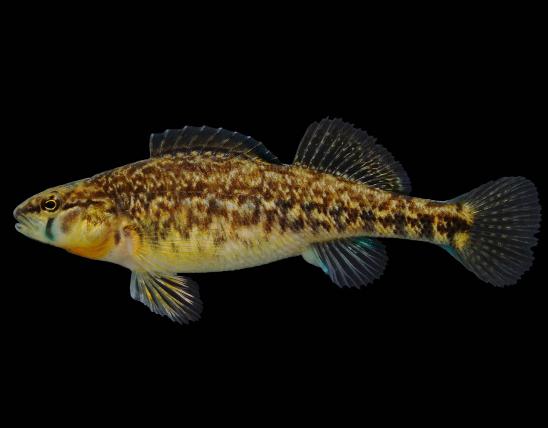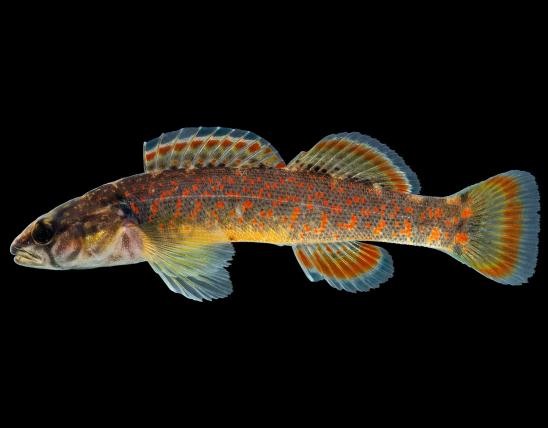
The greenside darter has olive to yellow sides and back, with scattered red spots and vertical blotches often arranged in a V or W pattern. Breeding males have bright blue-green on head and lower fins and green vertical bars. This is the second largest Missouri darter in size next to the logperch.
Total length: 2 1/2 to 4 1/2 inches; to more than 5 1/2 inches.

A fish of the Ozarks. Limited to the southern half of the state.
Habitat and Conservation
The greenside darter occurs in swift to moderate current in streams and rivers with rocky or gravel riffles throughout the Ozarks. It avoids the smallest headwater creeks and is most abundant in rivers of moderate size.
The greenside is one of the most abundant and widespread darters in the Ozarks, and the limits of its distribution mark the boundaries of that region in Missouri to a remarkable degree. The few places it occurs in our state, outside the Ozarks, include Auxvasse Creek and Loutre River (Callaway and Montgomery counties) and the Little Osage and Marmaton rivers (Vernon County).
Food
Larvae of aquatic insects including midges, caddisflies, and mayflies; also small crustaceans and snails.
Life Cycle
The greenside darter spawns earlier than most Missouri darters, beginning by late March and completed by the end of April. Like the banded darter, this species attaches eggs to strands of filamentous algae and aquatic mosses. The males occupy and defend territories. Greenside darters can live for 5 years and are most active in daytime.
Human Connections
Spring and early summer is an ideal time to observe fishes such as greenside darters. During spawning season, the males possess striking colors, and it is easier to watch them because they tend to be in rather shallow water. With some patience, you may be able to watch their interesting spawning activity. Because fish are easily frightened, approach cautiously to avoid transmitting vibrations into the water. Maintain a low profile to avoid being silhouetted against the sky. Consider using binoculars. Wear polarized sunglasses to diminish scattered sun reflections from the water's surface. A day with little wind is ideal, so the surface of the water isn't broken.
Ecosystem Connections
Greenside darters spawn in late March to the end of April, rather early for most darters. But timing is everything: this darter typically attaches its eggs to strands of filamentous algae (Cladophora spp.), which has its big "bloom" in early spring before trees gain their leaves and shade forest streams, causing the algae to decline. Thus the fish's reproduction is timed to match the heyday of the algae, whose appearance is in early spring before trees gain their leaves. The study of the seasonal timing of natural events, and their interconnections, is called phenology.
